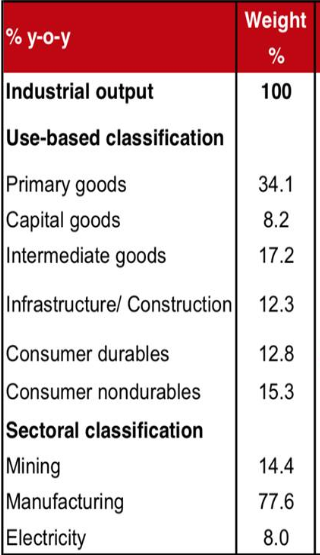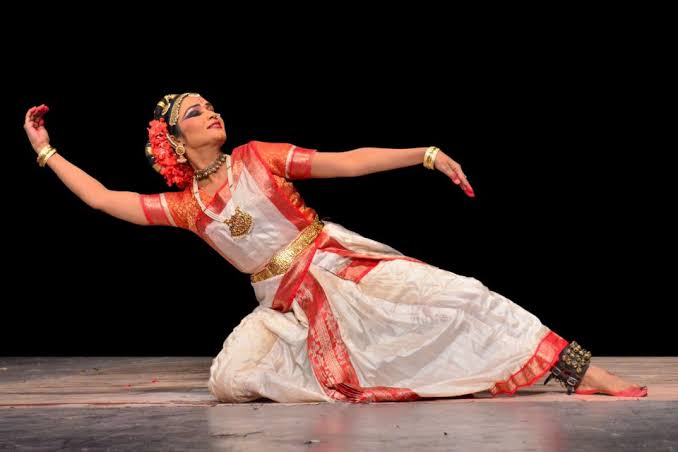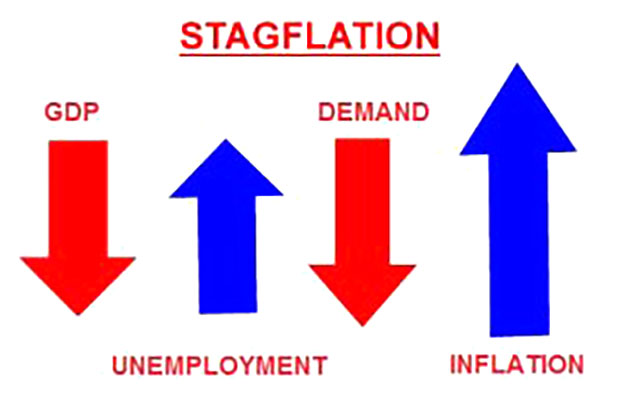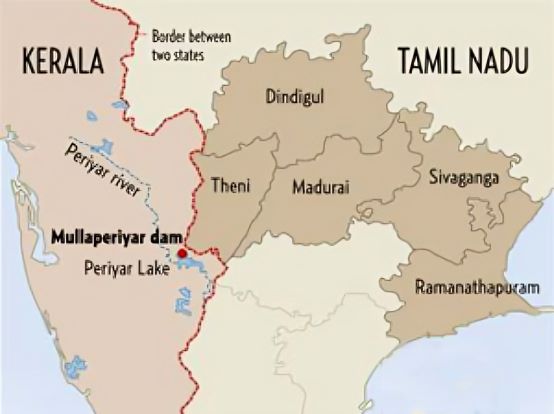Indian Economy
Contraction in Index of Industrial Production
Why in News
According to the data released by the Ministry of Statistics and Programme Implementation (MoSPI), the quick estimates of Index of Industrial Production (IIP) stands at 127.7 for October 2019, which is 3.8% lower as compared to the level in the month of October 2018. This contraction is due to demand slump in economy and fall in activity across sectors such as manufacturing, electricity, infrastructure etc.
- Retail inflation (measured by the Consumer Price Index) surged to a 40-month high of 5.54% in November 2019, owing to rising food inflation.
- The combination of contraction in industrial activity and rising inflation has led experts to fear that India is entering a phase of stagflation.
- Stagflation means a situation characterized by simultaneous increase in prices and stagnation of economic growth.
- It is described as a situation in the economy where the growth rate slows down, the level of unemployment remains steadily high and yet the inflation or price level remains high at the same time.
- Dangerous for the economy
- In a usual low growth situation, central banks and government try to stimulate the economy through higher public spending and low interest rates to create demand.
- These measures also tend to elevate prices and cause inflation. So, these tools cannot be adopted when inflation is already running high, which makes it difficult to break out of low growth-high inflation trap.
- The solution lies in increasing productivity, this enables higher growth without inflation.
Index of Industrial Production
- The Index of Industrial Production (IIP) maps the change in the volume of production in Indian industries.
- It is estimated and published on a monthly basis by the Central Statistical Organisation (CSO) under MoSPI.
- It is currently calculated using 2011-2012 as the base year.
- The IIP is basically divided into three sectors, though a use-based classification is also provided by the CSO.
- The three sectors include: Mining, Manufacturing and Electricity.
- Electricity, crude oil, coal, cement, steel, refinery products, natural gas, and fertilisers are the eight core industries that comprise about 40% of the weight of items included in the Index of Industrial Production.
- Use based classification include: Primary Goods, Capital Goods, Intermediate Goods, Infrastructure/ Construction goods, Consumer durables and Consumer nondurables.
- The three sectors include: Mining, Manufacturing and Electricity.
- Calculation
- The index is created by giving different weights to each sector and every month, production is tracked.
- Finally, the index value is compared to the value it had in the same month last year to figure out the economy’s industrial health.
Consumer Price Index
- Inflation refers to the rise in the prices of most goods and services of daily or common use, such as food, clothing, housing, recreation, transport, consumer staples, etc.
- It measures the average price change in a basket of commodities and services over time. The opposite and rare fall in the price index of this basket of items is called ‘deflation’.
- It is indicative of the decrease in the purchasing power of a unit of a country’s currency. This is measured in percentage.
- In India, inflation is primarily measured by two main indices — WPI (Wholesale Price Index) and CPI (Consumer Price Index), which measures wholesale and retail-level price changes, respectively.
- The goods or services sold by businesses to smaller businesses for selling further is captured by the WPI.
- The CPI is an index measuring retail inflation in the economy by collecting the change in prices of most common goods and services used by consumers.
Governance
Samagra Shiksha
Why in News
Ministry of Human Resource Development is implementing the Scheme of Vocationalisation of School Education.
- Under the scheme, a vocational subject is offered for Classes IX to XII along with the general education to provide necessary employability and vocational skills for a variety of occupations.
- The above scheme is being implemented under the umbrella of ‘Samagra Shiksha – an integrated scheme for school education’.
Samagra Shiksha
- Key Provisions:
- Samagra Shiksha is an integrated scheme for school education extending from pre-school to class XII to ensure inclusive and equitable quality education at all levels of school education.
- It subsumes the three Schemes of Sarva Shiksha Abhiyan (SSA), Rashtriya Madhyamik Shiksha Abhiyan (RMSA) and Teacher Education (TE).
- The scheme treats school education holistically as a continuum from Pre-school to Class 12.
- The main emphasis of the Scheme is on improving the quality of school education by focussing on the two T’s – Teacher and Technology.
- Vision:
- The vision of the Scheme is to ensure inclusive and equitable quality education from pre-school to senior secondary stage in accordance with the Sustainable Development Goal (SDG) for Education.
- SDG-4.1: Aims to ensure that all boys and girls complete free, equitable and quality primary and secondary education leading to relevant and effective learning outcomes.
- SDG 4.5: Aims to eliminate gender disparities in education and ensure equal access to all levels of education.
- The scheme mainly aims to support States in the implementation of the Right of Children to Free and Compulsory Education (RTE) Act, 2009.
- Right to Education Act (RTE) is a fundamental right under Article 21-A of the Constitution of India.
- The vision of the Scheme is to ensure inclusive and equitable quality education from pre-school to senior secondary stage in accordance with the Sustainable Development Goal (SDG) for Education.
- Funding Pattern:
- The Scheme is being implemented as a Centrally Sponsored Scheme.
- The fund sharing pattern for the scheme between Centre and States is at present in the ratio of 90:10 for the North-Eastern States and the Himalayan States and 60:40 for all other States and Union Territories with Legislature.
- It is 100% centrally sponsored for Union Territories without Legislature.
- The scheme also proposes to give flexibility to the States and UTs to plan and prioritize their interventions within the scheme norms and the overall resource envelope available to them.
- The Scheme is being implemented as a Centrally Sponsored Scheme.
Important Facts For Prelims
Mullaperiyar Dam
Why in News
The Ministry of Jal Shakti has constituted a three-member Supervisory Committee to settle the issue of Mullaperiyar dam between Kerala and Tamil Nadu.
- The tension between the two states over the issue has persisted since the 1960s, with Kerala citing concerns regarding the dam’s safety and arguing for the reduction of the dam’s water levels.
- But with the water from the dam being diverted to five districts in Tamil Nadu and its importance in the state’s irrigation and power production practices, Tamil Nadu has consistently opposed this.
Mullaperiyar Dam
- The Mullaperiyar dam is located on the confluence of the Mullayar and Periyar rivers in Kerala’s Idukki district.
- It is operated and maintained by the Tamil Nadu for meeting the drinking water and irrigation requirements of five of its southern districts.
- According to a 999-year lease agreement made during the British rule the operational rights were handed over to Tamil Nadu.
- The dam intends to divert the waters of the west-flowing river Periyar eastward to the arid rain shadow regions of the Tamil Nadu.
Periyar River
- The Periyar River is the longest river in the state of Kerala with a length of 244 km.
- It is also known as ‘Lifeline of Kerala’ as it is one of the few perennial rivers in the state.
- A perennial river is a channel that has continuous flow in parts of its stream bed all year round.
- Periyar River originates from Sivagiri hills of Western Ghats and flows through the Periyar National Park.
- The main tributaries of Periyar are Muthirapuzha, Mullayar, Cheruthoni, Perinjankutti.
Important Facts For Prelims
National Financial Reporting Authority
The National Financial Reporting Authority (NFRA) was constituted on 1st October, 2018 by the Government of India under section 132 (1) of the Companies Act, 2013.
Need: In the wake of accounting scams, a need was felt to establish an independent regulator for enforcement of auditing standards and ensuring the quality of audits so as to enhance investor and public confidence in financial disclosures of companies.
Composition: The Companies Act requires the NFRA to have a chairperson who will be appointed by the Central Government and a maximum of 15 members.
Functions and Duties
- Recommend accounting and auditing policies and standards to be adopted by companies for approval by the Central Government;
- Monitor and enforce compliance with accounting standards and auditing standards;
- Oversee the quality of service of the professions associated with ensuring compliance with such standards and suggest measures for improvement in the quality of service;
- Perform such other functions and duties as may be necessary or incidental to the aforesaid functions and duties.
Powers
- It can probe listed companies and those unlisted public companies having paid-up capital of no less than Rs 500 crore or annual turnover of no less than Rs 1,000 crore.
- It can investigate professional misconduct committed by members of the Institute of Chartered Accountants of India (ICAI) for prescribed class of body corporate or persons.
Important Facts For Prelims
Atal Bhujal Yojana
- The Atal Bhujal Yojana (ABHY) is a central sector scheme worth Rs.6,000 crore for sustainable management of groundwater with community participation.
- It envisages people's participation through the formation of ‘Water User Associations’, water budgeting, preparation & implementation of Gram-panchayat-wise water security plans, etc.
- It is being implemented by the Ministry of Jal Shakti (earlier known as Ministry of Water Resources, River Development and Ganga Rejuvenation).
- The scheme is being funded by the Government of India and the World Bank on 50:50 basis.
- The identified over-exploited and water-stressed areas for the implementation of the scheme are Gujarat, Haryana, Karnataka, Madhya Pradesh, Maharashtra, Rajasthan, and Uttar Pradesh.
- The States have been selected according to the degree of groundwater exploitation and degradation, established legal and regulatory instruments, institutional readiness, and experience in implementing initiatives related to groundwater management.
Important Facts For Prelims
Kuchipudi Dance Form
Kuchipudi is one of the 8 classical dance forms of India.
- The dance form has emerged from a
 popular theatrical art ‘Kuchipudi Yakshagana’ named after the place of its origin, the village Kuchipudi in Andhra Pradesh.
popular theatrical art ‘Kuchipudi Yakshagana’ named after the place of its origin, the village Kuchipudi in Andhra Pradesh. - It is performed as dance drama i.e. performance in groups and also as solo items.
- Siddendra Yogi, the disciple of Narayana Theertha who lived in the 17th century, is credited to have systemised the art form of Kuchipudi Yakshagana.
- Costumes, ornaments and jewellery occupy an important place.
Important Facts For Prelims
IBM GRAF
Why in news
International technology company IBM plans to make a high-resolution weather forecast model, named IBM GRAF (Global High-Resolution Atmospheric Forecasting System), that will rely on user-generated data to improve the accuracy of forecasts available in India.
- It will generate forecasts at a resolution of 3 kilometres. This is a significantly higher resolution than the 12-kilometre models used by the India Meteorological Department to generate forecasts.
- Weather forecasts will be available to individuals for free download and can be used by farmers. The forecast system will also be used to provide custom forecasts for energy companies, consumer brands, insurance businesses and satellite imagery analysts.
- For its forecasts, IBM will rely on a global network of sensors — automatic weather station, data buoys and barometric pressure data from cell phones of users who will download the application.
- It will run on supercomputer and generate forecasts over desired time-frames — three days, weekly or fortnightly.






